Dedicated Follower of Fashion – The Kinks
They seek him here, they seek him there,
His clothes are loud, but never square.
It will make or break him so he’s got to buy the best,
‘Cause he’s a dedicated follower of fashion.
And when he does his little rounds,
‘Round the boutiques of London Town,
Eagerly pursuing all the latest fads and trends,
‘Cause he’s a dedicated follower of fashion.
Oh yes he is (oh yes he is), oh yes he is (oh yes he is).
He thinks he is a flower to be looked at,
And when he pulls his frilly nylon panties right up tight,
He feels a dedicated follower of fashion.
Oh yes he is (oh yes he is), oh yes he is (oh yes he is).
There’s one thing that he loves and that is flattery.
One week he’s in polka-dots, the next week he is in stripes.
‘Cause he’s a dedicated follower of fashion.
They seek him here, they seek him there,
In Regent Street and Leicester Square.
Everywhere the Carnabetian army marches on,
Each one an dedicated follower of fashion.
Oh yes he is (oh yes he is), oh yes he is (oh yes he is).
His world is built ’round discoteques and parties.
This pleasure-seeking individual always looks his best
‘Cause he’s a dedicated follower of fashion.
Oh yes he is (oh yes he is), oh yes he is (oh yes he is).
He flits from shop to shop just like a butterfly.
In matters of the cloth he is as fickle as can be,
‘Cause he’s a dedicated follower of fashion.
He’s a dedicated follower of fashion.
He’s a dedicated follower of fashion.
***
fash·ion ![]() (f
(f sh
sh
 n)
n)
Not style or stylish, you note, since you can be stylish at any time without following the trends and dictate of fashion. No, we’re talking here about the Fashion Industry, the deep, dark and dangerous body who thinks it knows what we ought to be wearing. And as the Kinks perceptively noted, the 60s marked the catalyst for a revolution in how we, the consumers, were manipulated by fashions.
If we start by accepting that everybody needs to wear clothes for functional reasons, and that the chances are we have to wear clothes appropriate to the environment and climate, not to mention cultural norms and laws, that still leaves plenty of scope for individuality. When I was a student, you created your individuality not by buying expensive gear in boutiques but buying odd items in charity shops and jumble sales – maybe a suit from Oxfam, or a pair of jeans from Age UK – then a few accessories to make it stand out from the crowd. Easier for women, of course – they could play with scarves, beads and other costume jewellery, combinations of tops, leggings, dresses and skirts – the permutations and possibilities were endless and the style would be uniquely your own.
The fashion industry would claim to be not so much avant grade but making a statement for the look for the new season. Why? Simply because the industry is about selling clothes to make money, that’s why. For the wealthy, something as close to the catwalk or a bespoke number from the hottest designer names, in the certainly that few will be able to afford to match, even if they had the verve to carry it off. Not that it’s entirely unknown for actresses to walk down the red carpet at the Oscars in similar attire, but one would imagine they keep plan B reserve frocks for just such an emergency! Some might look spectacular, but for the money charged they are irrelevant to our lives, even if we are “a flower to be looked at.”
For the rest of us, the colours and styles are broadly copied, percolate down through the food chain, and emerge in M&S, Next, Dotty P’s or Primark in one guise or another. Then the issue is not that there is too much choice, but not enough. So the same stuff comes out into all the shops… and every woman ends up with a similar wardrobe each year!
The obvious question is why we are so gullible to fall for it, but the answer presumably is that if it’s in the shops we buy it, and the dictate of the fashion industry ultimately determine what goes on the shelves and displays. The industry would argue there is a trickle-down from the catwalks and fashion shows to the High Street, but is that relevant to us? Not in the slightest! We need clothes for living, functional and long-lasting. How many people buy an outfit to be worn once then discarded? Only the hyper-rich, I would surmise.
The irony is that there is seldom if every anything startlingly original about the clothes and the colours. The old saying goes that if you keep it long enough it will come back into fashion, and it’s not far wrong. I wore platforms and bags as a teenager, and, lo and behold, platforms and baggy trousers are still making appearances. Also that many classic styles never go out of fashion, or certainly not out of style. You can get suits now which are not so very different to the early 60s, yet they have been on the shelves ever since. Jeans have changed a little, but not that much – you can still get the same classic Levis you ever could, and they still sell by the bucketload.
For example, go round a men’s fashions department in any department store. Chances are you will see a range of shirts, trousers and woollens in a range of familiar colours and styles. Polo shirts by the score, and polo shirts have not changed significantly in the past 50 years. The colours might vary, occasionally the patterns look a little different, but essentially you have one product which may cost anywhere between £8 and £80, possibly higher. And the biggest laugh is that once you get beyond the really cheap and cheerful ones, the quality of fabric and longevity are much of a muchness – all you’re really paying for is the badge. Is a Ralph Lauren badge to show off to your mates really worth paying an extra £50 for? Buy from Marks or Asda, or go to an outlet store, you won’t get inferior gear but you will save yourself the trouble of paying through the nose for something the fashion industry would like you to believe is special but in fact is just another example of brand marketing appealing to your vanity!
Here’s a suggestion to the fashion trade: start by asking people what they like and make that. If it means the same or similar clothes every year, then so be it. Of course, most of the obscure creations they display on the catwalk bear no relation whatever to what people wear, and frankly just open most of the clothes, and models and designers, to ridicule. Other displays you just think “so what?”
There are so many examples, but here are a few – and note the comment about the rip-off of charging $2,000 for a pair of ripped jeans, bought by people who are so shallow they are more concerned with labels than with fit, quality and durability. Had I that money going spare, I could buy a really excellent suit made to measure and shipped to me from Hong Kong, and enough left over to buy some perfectly serviceable jeans of a decent brand. Why would you want more than that from your clothes, other than sheer vanity and one-upmanship? The exclusivity buys you precisely nothing in lasting value, and to repeat it’s jeans I’m talking about – traditional hard-wearing working man’s clothing.
There are many many examples of appalling garments created, but this one struck me as the very apogee of the art form. Is there anything to be said in favour of this truly bizarre outfit, other than a fancy dress costume that will make people think you are utterly deranged?! This truly would be making a tit of yourself, but how many catwalk outfits would you really want to be seen dead in anyway? Be truthful!
Look at the ones pictured in the gallery above – any you could see yourself wearing? What value to they add? None from where I’m standing.
And while you’re at it, take a nose at some of the catwalk falls resulting from models wearing impractical footware that damages feet and pride in equal measure!
For myself, if ever the fashion industry and my wardrobe collide, that will be totally co-incidental and never to be repeated. I wear clothes that are practical, fit me, do for the right occasion have a certain joie de vivre, but are not extravagant or extreme in any way. I love Rohan clothes, which are moderately expensive but by no means excessive in the context of fashion prices, comfortable, have a recognisable style, and are entirely practical and well-made. I can’t afford, nor would I want a casual wardrobe entirely comprising Rohan, but I could do much worse, for sure!
For work, I like suits made to measure since they look good and last. Value is not the cheapest, but quality and comfort make a greater impression in the long-run than the temporary status blip of wearing a label deemed to be fashionable, since the latter approach will condemn you to following the expensive dictats of the industry forever more. Go for classics and you are eternally well-dressed!
PS. This piece in the Observer gives a fascinating insight into who decides what we wear.



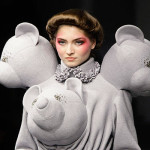
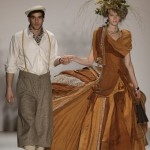
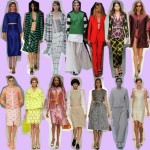




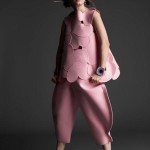

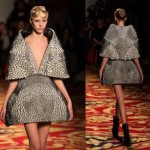

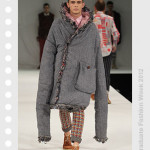


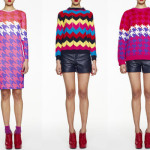
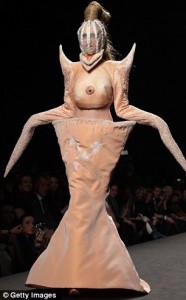
Finally someone with the courage to say what I’m sure many others think!
Well done!!!